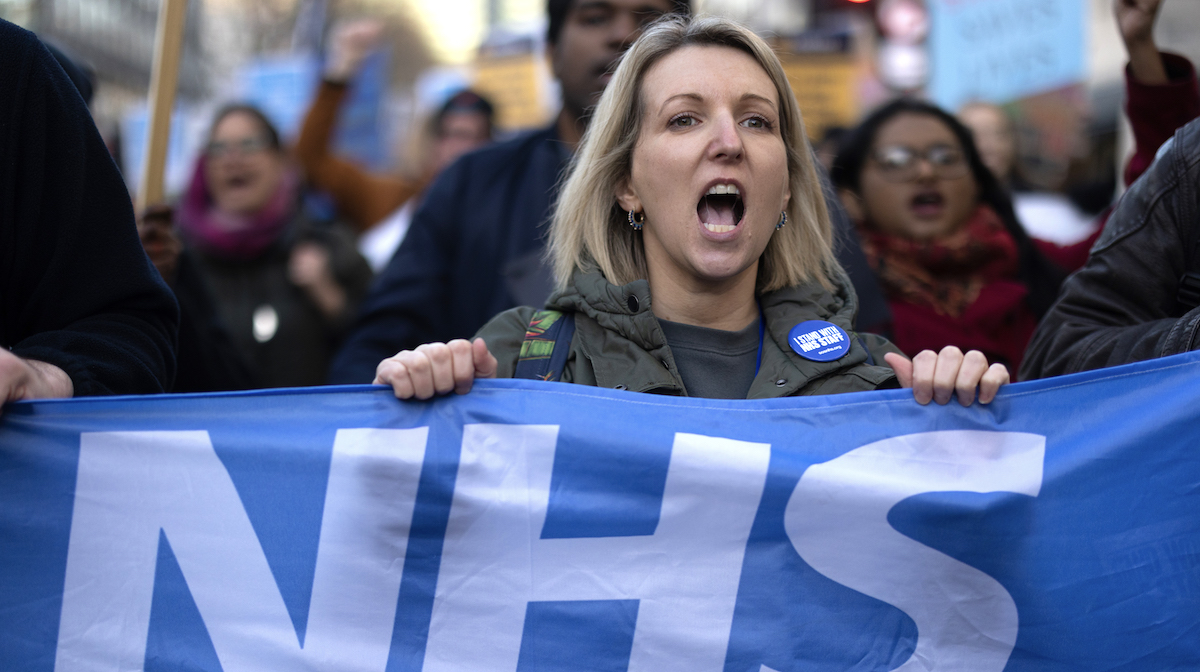Public sector pay growth has jumped 9.6 per cent, the fastest rate since current records began 22 years ago. Private sector wage growth, meanwhile, is slightly more modest at 7.9 per cent. The NHS bonus – a one-off payment of between £1,650 and £3,500 given in June – helped lift overall wages up by 8.2 per cent, higher than inflation (at 7.9 per cent), the first time that has happened since March last year.
That bonus was agreed by the government in an attempt to put an end to industrial action among health workers. Around 160,000 working days were lost in June alone, the majority in the NHS. But with the bonus and the sheer size of the NHS payroll (at 1.4 million, it’s the largest workforce in Europe) overall national pay figures have been pushed up.
There is more to those wage figures than the NHS effect, however. Growth in pay excluding bonuses (7.8 per cent) was the highest seen in over two decades. Expect that to dominate the headlines today. But today’s data, released by the ONS, runs only to June – HMRC has its own, more timely figures, that suggest that wage growth is now slowing. This is just one indicator but it should relieve fears of a wage-price spiral.
What’s more, markets now expect the Bank of England to keep interest rates at 5.75 per cent until spring next year. Not so long ago, the rate was expected to hit 6.5 per cent. This is shown in the below expectations tracker, unique to The Spectator data hub.
Meanwhile, headlines suggest that unemployment has risen to 4.2 per cent. But this is deceptive. One of the main economic problems in the UK right now is that millions of working-age people are not actively seeking jobs. Combine that with those on out-of-work benefits and the true jobless figure is closer to 12 per cent of the total working age population. That figure is closer to 18 per cent in cities like Manchester, Birmingham and Glasgow. That overall picture is updated later today, but so far here is the full stats.
The fact that this level of worklessness occurred at the same time as a labour shortage is quite the anomaly. It revealed a dysfunctional welfare system – one that may now be on the mend. Those looking for work have a decent chance in an economy where vacancies are still at historic highs.
Still, the most pressing problem is the number not looking for work citing long-term health problems: this figure is still trending upwards and has hit a record high of 2.6 million
Rishi Sunak was generous with furlough, hoping it would minimise the scarring effects of lockdown on the workforce and would encourage a quicker economic bounce back. Instead, the opposite happened: the UK is one of the few countries where the number of people in work has not returned to pre-pandemic levels, with sickness benefit the new problem (there are 4,000 new claims a day, almost twice pre-pandemic levels). Lockdown had a scrambling effect on the UK labour market, meaning the metrics normally followed now tell only part of the story. We’ll continue to bring the full story on the labour market tab in The Spectator data hub.







Comments